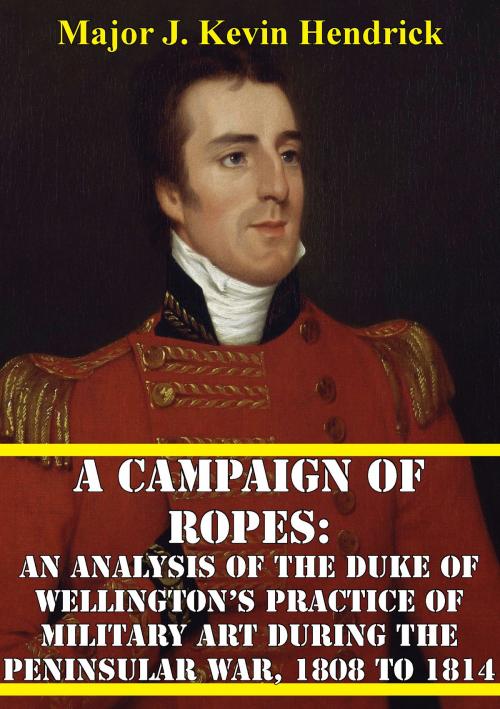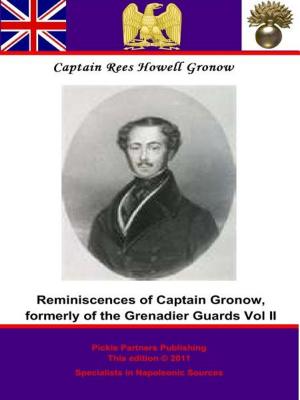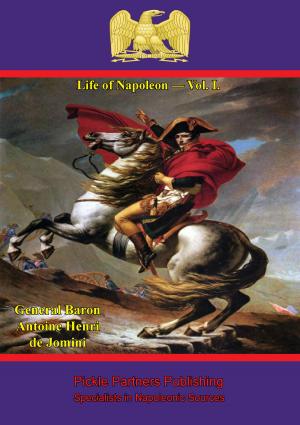A Campaign Of Ropes:
An Analysis Of The Duke Of Wellington’s Practice Of Military Art During The Peninsular War, 1808 To 1814
Nonfiction, History, Spain & Portugal, France, Military| Author: | Major J. Kevin Hendrick | ISBN: | 9781782899969 |
| Publisher: | Wagram Press | Publication: | November 6, 2015 |
| Imprint: | Wagram Press | Language: | English |
| Author: | Major J. Kevin Hendrick |
| ISBN: | 9781782899969 |
| Publisher: | Wagram Press |
| Publication: | November 6, 2015 |
| Imprint: | Wagram Press |
| Language: | English |
The purpose of this paper was to study the practice of military art at the operational level of war. The story of Wellington’s ultimate success against Napoleon’s Marshals was selected as a case study as it seemed rich in the application of mental agility to achieve an asymmetrical military advantage in a theater of war. As military theory recognizes two general types of military art, classical strategy and operational art, the research question was constructed to determine if Wellington practiced pure classic strategy, or an early/transitional form of operational art.
In order to provide a basis of analysis, the essential elements of both classic strategy and operational art are next defined. The history of classic strategy is outlined, then the theory of Clausewitz and Jomini used to define its four basic elements. The practice of operational art is then traced, from its inception by U.S. Grant during the American Civil War, to Soviet operational theory developed in the 1920’s. The theory of Dr. James Schneider, a primary interpreter of both Grant and the Soviets, provides the eight essential elements of operational art. To round out the section on military art, U.S. operational doctrine is outlined and discussed.
Like most military officers, Wellington was a creature of his own experience, therefore a chapter is dedicated to the lessons he learned as a young officer in India. The following chapter is dedicated to a study of the Peninsular War. As the research question deals with both the operational and strategic levels of war, Wellington’s tactics are neglected in favor of his campaign concepts and execution.
The purpose of this paper was to study the practice of military art at the operational level of war. The story of Wellington’s ultimate success against Napoleon’s Marshals was selected as a case study as it seemed rich in the application of mental agility to achieve an asymmetrical military advantage in a theater of war. As military theory recognizes two general types of military art, classical strategy and operational art, the research question was constructed to determine if Wellington practiced pure classic strategy, or an early/transitional form of operational art.
In order to provide a basis of analysis, the essential elements of both classic strategy and operational art are next defined. The history of classic strategy is outlined, then the theory of Clausewitz and Jomini used to define its four basic elements. The practice of operational art is then traced, from its inception by U.S. Grant during the American Civil War, to Soviet operational theory developed in the 1920’s. The theory of Dr. James Schneider, a primary interpreter of both Grant and the Soviets, provides the eight essential elements of operational art. To round out the section on military art, U.S. operational doctrine is outlined and discussed.
Like most military officers, Wellington was a creature of his own experience, therefore a chapter is dedicated to the lessons he learned as a young officer in India. The following chapter is dedicated to a study of the Peninsular War. As the research question deals with both the operational and strategic levels of war, Wellington’s tactics are neglected in favor of his campaign concepts and execution.











![Cover of the book Waterloo Lectures: A Study Of The Campaign Of 1815 [Illustrated - 4th Edition] by Major J. Kevin Hendrick](https://www.kuoky.com/images/2012/may/300x300/9781908902375-i01T_300x.jpg)



![Cover of the book Wellington’s Lieutenants [Illustrated Edition] by Major J. Kevin Hendrick](https://www.kuoky.com/images/2015/november/300x300/9781786255082-Avqc_300x.jpg)